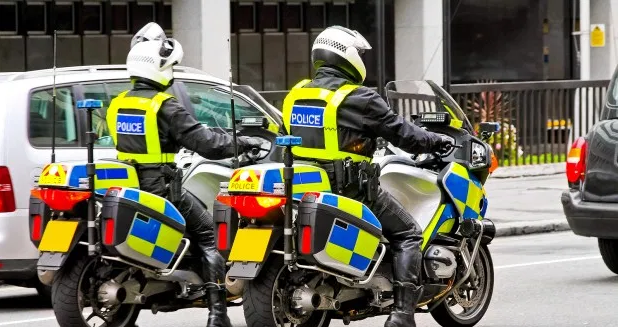Please welcome Mike Moloney as Canada Moto Guide’s safety columnist. Mike is an advanced motorcycle instructor with RoSPA, Britain’s Royal Society for the Prevention of Accidents. In 1983, Mike founded The Sportbike Rally, which took place in Parry Sound. Mike is a veteran of dozens of self-organized international tours and cites his favorite destination as, “next”.
Do you consciously choose to wear high-visibility (hi-vis) motorcycle gear such as a jacket, vest or helmet? Why? Does it simply seem like a sensible idea, or is it because of a traffic incident where you weren’t seen?
And what exactly do we mean by hi-vis clothing? Wikipedia describes it as “any clothing is worn that is highly luminescent in its natural matte property or a color that is easily discernible from any background.” That’s pretty much the opposite of camouflage, which is “the use of any combination of materials, coloration, or illumination for concealment.”
Brightly colored clothing is not only easier to see, but it registers with more priority to the human eye.
Perhaps, on your motorcycle, you’ve experienced the distinct displeasure of being on the receiving end of the time-worn phrase, “Sorry, I didn’t see you.”
An accompanying police accident report might contain the line, “The driver looked, but failed to see”, which is useful only to a statistician. While car drivers are not deliberately trying to cause us harm there remains the unfortunate fact that, all too often, we are not being seen.
Why is this? Like it or not, we are part of the problem. There is an assumption among riders, a common belief, that we are being seen, not just merely ignored, but there are many factors that can determine our visibility to others. Let’s start with Global Precedence.
Global Precedence is the visual big picture. Generally speaking, a motorcycle is only a small portion of the big “global” picture, particularly when head-on to an approaching vehicle. A person’s eyes, and recognition, go to the largest objects first. Our brains process that information almost twice as fast as the local aspects. If something, anything, is larger and visually more compelling, that is where another road user is most likely to first focus their attention. It takes precedence.
Roger Foster, seen (easily) while out for a ride near Las Vegas on his Suzuki, jumps out visually on a grey day.
Making it work
Working from empirical data, safety regulators in many countries now stipulate a certain amount of retro-reflective material for motorcycle jackets. This usually involves a minimum amount of striping or piping on areas such as shoulder and arms. In some places, such as France, it even includes helmets (18 square cm for French heads, if you must know). A better strategy is for the entire area of the jacket, vest or helmet to be one luminescent color, making you appear as both a brighter and larger object.
“But”, we hear some riders say, “I’ll look like a dweeb”. Well, we know that fashion is fickle and subjective but if Harley-Davidson can see the benefits of including plenty of hi-vis safety clothing in its catalog – although it does tend to orange for some reason – then surely it has passed a key chic-to-wear test.
Let’s face it: no one goes to a hospital for the fine dining. Since we’re among the most vulnerable of road users, those things that may be able to give us a distinct safety advantage should be worth our consideration. When you’re the one waiting for the ambulance to arrive, do you want to hear someone say, “Sorry, I didn’t see you”?
Bright clothing is just one aspect of providing useful information to other road users. There are also some options for making our machine more visible. Beyond that, we must look within ourselves. Factors such as our position on the road, bearing, and speed is key components of being seen by others. We can look at these in future articles.
Alright then, I’m outfitted like a motorized macaw. Can you see me now?

